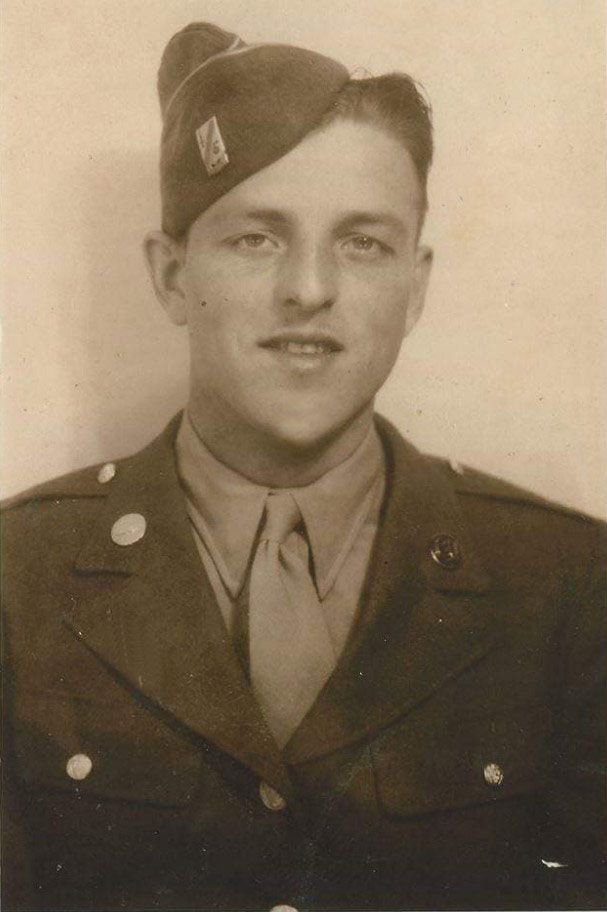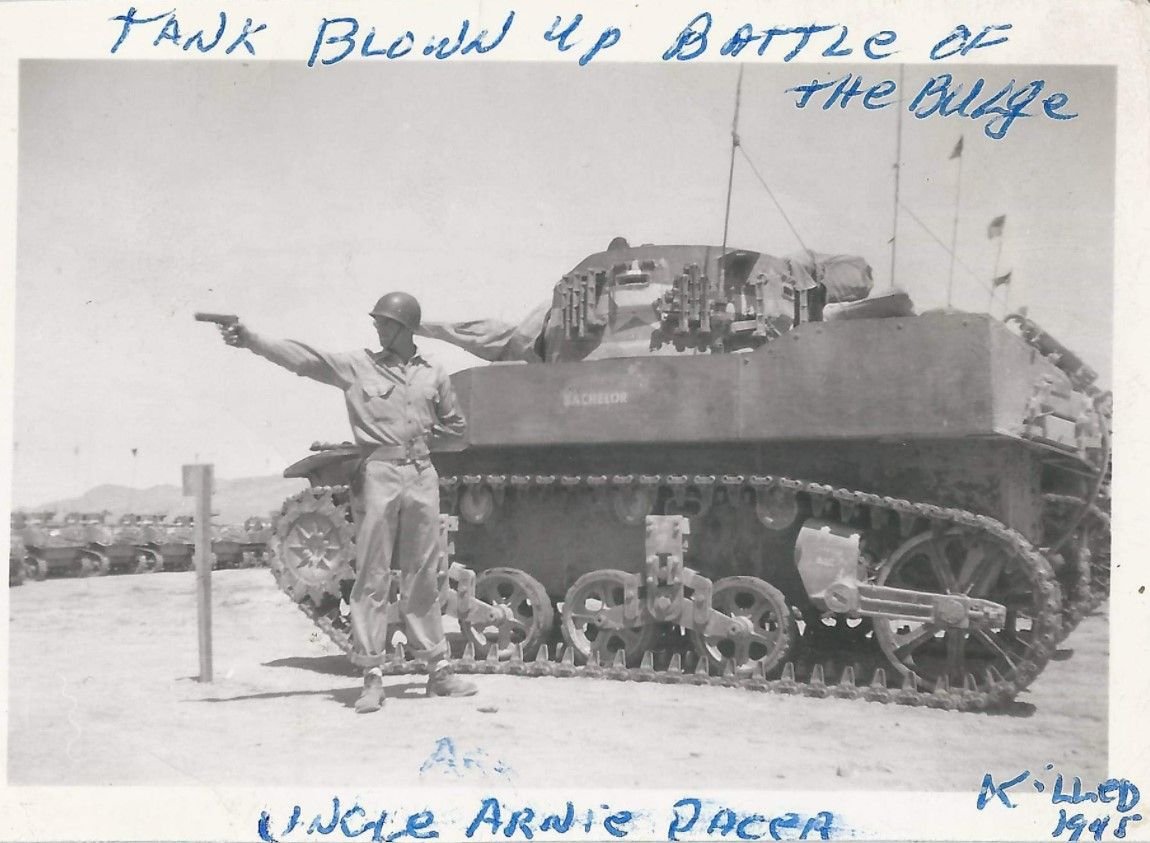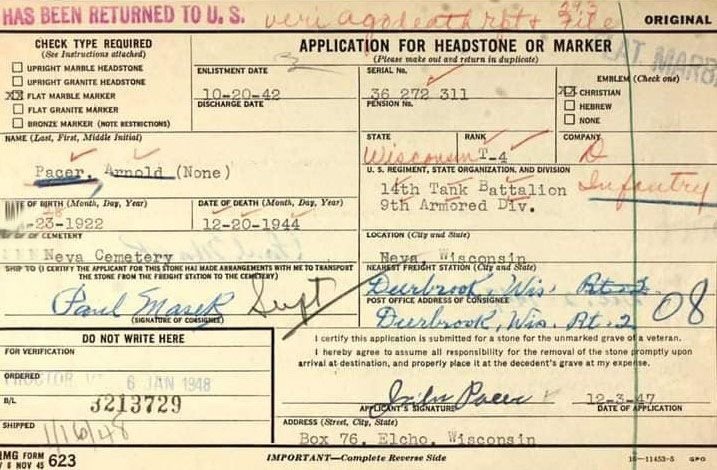Arnold Pacer and the Battle of the Bulge
Arnold Pacer
By Otto Tiegs III
The Battle of the Bulge was fought eighty years ago this December. It was the last major Nazi offensive during World War II, taking place from December 16, 1944 to January 26, 1945. The battle was the third largest ever fought by the United States Army in any war, one of the coldest battles in world history, and the bloodiest battle of World War II. Arnold Pacer, a Langlade County resident, was one of the 80,000 casualties of the battle.
Arnold Pacer could trace his family's roots in Langlade County to 1890, when his father and grandparents moved to the Bryant area from Manitowoc County. His father, John, married his mother, Julia Kasha, in Antigo on May 8, 1906. Arnold was born September 23, 1922, in Bryant, and was the 12th of 13 children in the family.
The farming family moved several times between the Price Township, the Neva Township, and Kempster, before moving to Elcho in 1935 where his father logged for a living. Arnold graduated eighth grade from the Post Lake school and then attended Elcho High School for two years before moving on to a job with Consolidated Paper in Wisconsin Rapids.
He was drafted on October 6, 1942, and once through basic training, was assigned to the 14th Tank Battalion, 9th Armored Division. His group then went on to train at North Camp Polk in Louisiana, and landed in Normandy in September, 1944. The 14th made their way to Bastogne, and on December 16th, 1944, were among the first U. S. troops to be attacked by the surprise Nazi offensive. They were on patrol in what was thought to be a quiet sector along the rugged German-Luxembourg frontier border and found themselves in some of the heaviest fighting of the war with little combat experience.
Arnold found himself and his crew defending their position in a M8 Howitzer Motor Carriage which was no match for the Nazi tanks that were attacking them. Between the courage of the American GI's, the terrible weather, and the rough terrain of the Bastogne region, the Nazi attack was slowed enough that the men bought enough time for the 101st Airborne to arrive, and later, Patton's Army.
The defense and the severe cold weather cost the Americans many lives. In total over 8,600 men died, including Arnold Pacer. He was declared missing on December 20th, and when his remains were found he was declared killed in action. His body was temporarily interred at the Belgium's Heni-Chapelle Cemetery.
Although his body was still in Belgium, a memorial service was held at Elcho's Union Congregational Church on April 29th, 1945, for the community and family. The service was officiated by Reverend Foster Beck.
His body was returned to the United States on October 26, 1947, arriving in New York on the Joseph V. Connolly, an Army transport ship. His body made it back to Antigo, where church bells tolled for ten minutes, school children in the county bowed their heads in a moment of silence, and flags flew at half mast in honor of Arnold. Veteran’s organizations from Elcho and Antigo assembled honor guards to escort the body on foot from the old McCandless & Zobel funeral home to Second Avenue and Superior Street. From there, the funeral procession proceeded by car, lead by the Antigo Police Department to the city limits. Antigo Mayor Hjalmar Olson and Elcho Town Chairman Lionel Palmer attended the service at the Neva Town Cemetery. VFW members fired the final salute and the American flag that draped the casket was given to his father, John Pacer.









